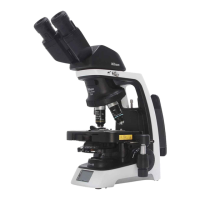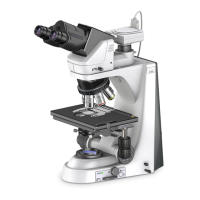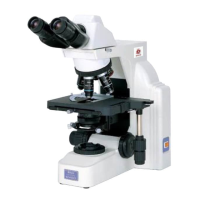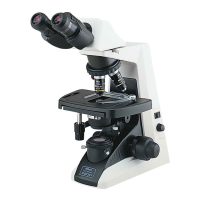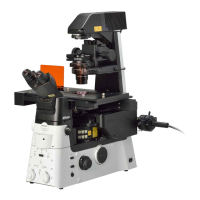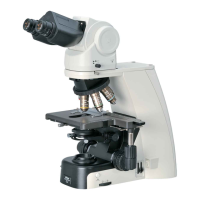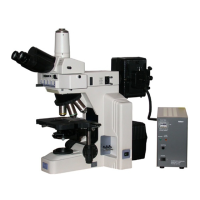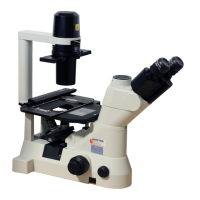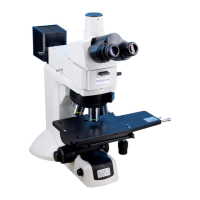Chapter 3 Individual Operations
107
Individual
Operations
9.4
Using the D-CUO DIC Condenser (Oil)
The D-CUO is an oil type condenser that provides best results
for differential interference contrast microscopy with oil
immersion objectives.
When using it, always apply immersion oil between the slide
glass and the tip of the condenser lens. Oil immersion
condensers are aberration-corrected under the assumption that
they will be immersed in oil. For this reason, oil must be applied
between the slide glass and the condenser, regardless of
whether the objective is an oil immersion type. (See “14
Oil/Water Immersion”.)
DIC condenser (Oil)
Low magnification microscopy
The D-CUO does not support objectives with low magnification (4x or less).
Two sliders are provided for the D-CUO with seal [N2] and [NR] attached to the handle of the slider. Attach the DIC module
([D-C DIC N2 OIL] or [D-C DIC NR OIL]) that matches the seal to the slider. (See Chapter 1, “3 Assembly Method - 18
Attach the condenser - ■ Attaching the DIC module to DIC condenser” in the “Assembly/Maintenance” instruction manual.)
Insert the slider with the DIC module attached in the condenser slot during differential interference contrast microscopy.
Select the DIC module appropriate for the microscopy method and objective. If the combination of the objective and DIC
module is not correct, differential interference contrast image cannot be obtained or the contrast decreases significantly.
Depending on the purpose of observation, dedicated modules for higher contrast or resolution are available. Note,
however, that in principle the contrast contradicts the resolution of differential interference contrast image (the higher the
contrast, the lower the resolution). (See the table in Chapter 1, “3 Assembly Method - 18 Attach the
condenser - Combinations of the DIC Slider on the Objective and the DIC Module on the Condenser (when D-CUO DIC
Condenser Oil is used)” in the “Assembly / Maintenance” instruction manual.)
Securely insert the slider until it hits the inside of the condenser. When switching to bright-field microscopy, pull out the
slider from the condenser.
For details on D-CUO aperture diaphragm, condenser focus knob, and condenser centering screw operations, see the
description on ■ Aperture diaphragm, ■ Condenser focus knob, and ■ Condenser centering screws in “9.3 Using the
NI-CUD Universal Condenser (Dry)”.
Aperture
diaphragm leve
DIC slide
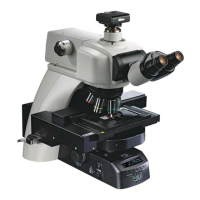
